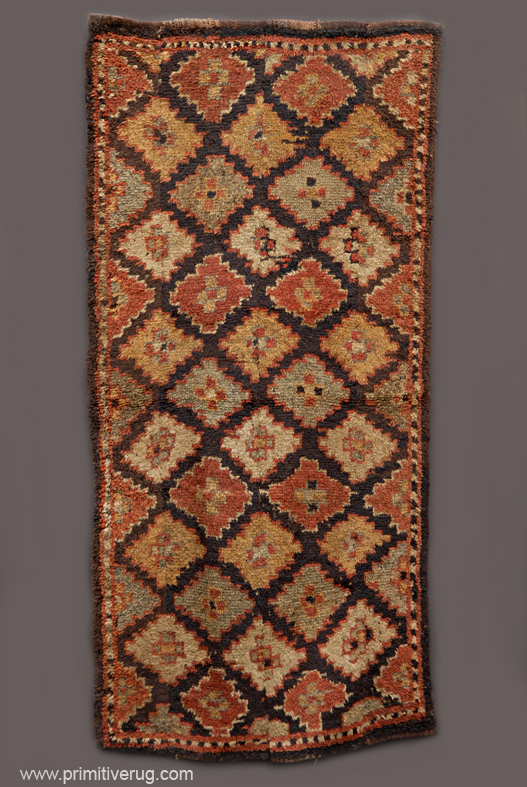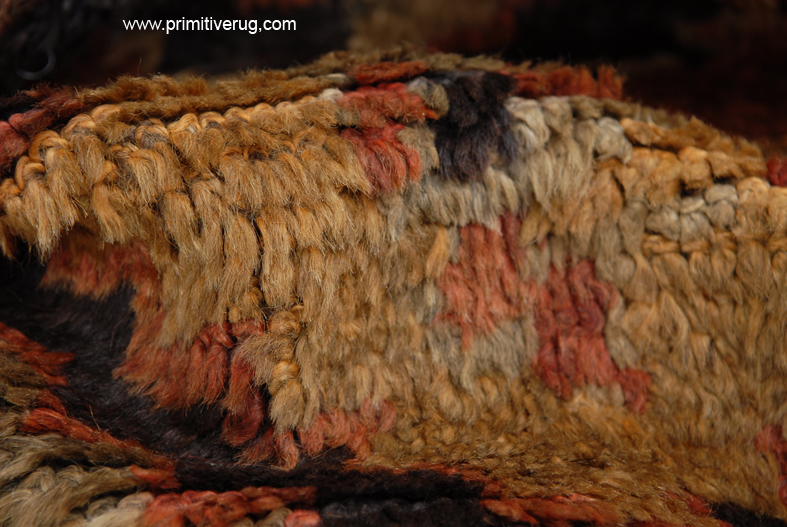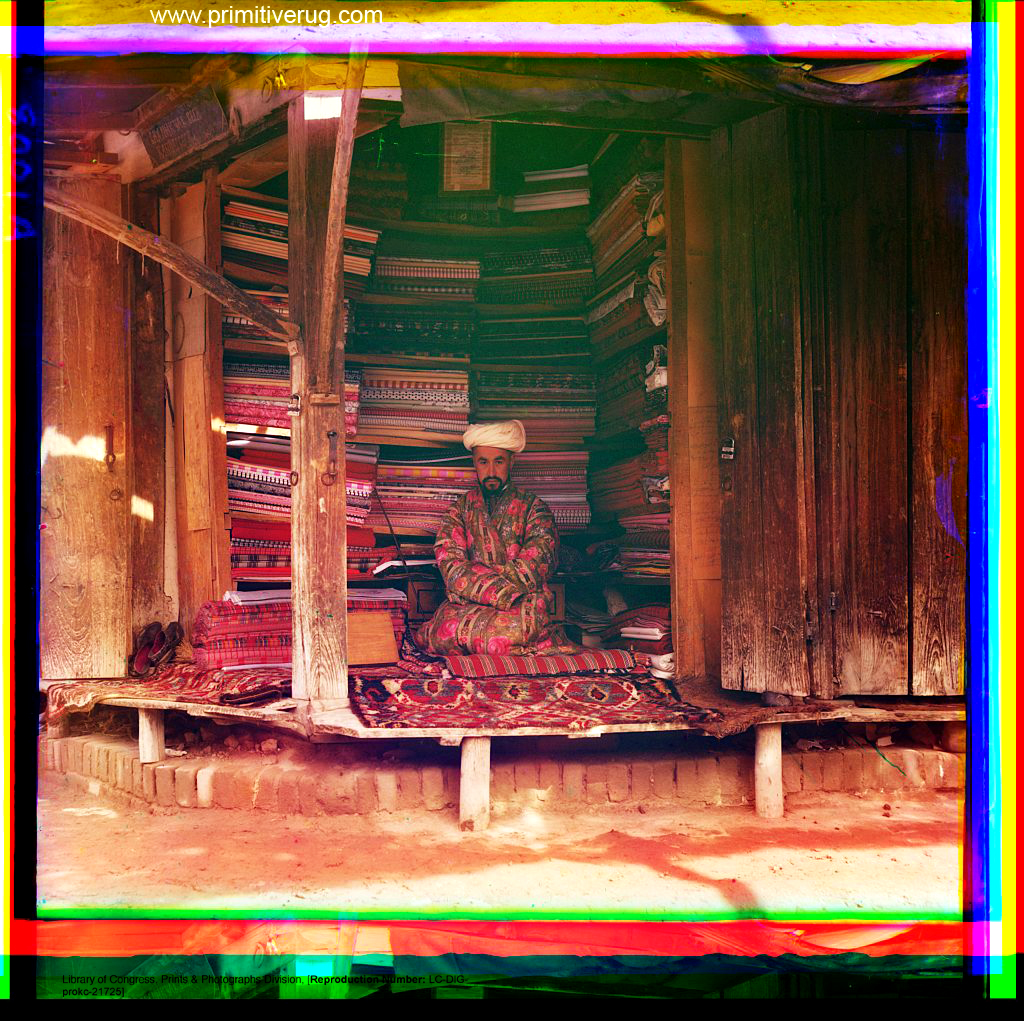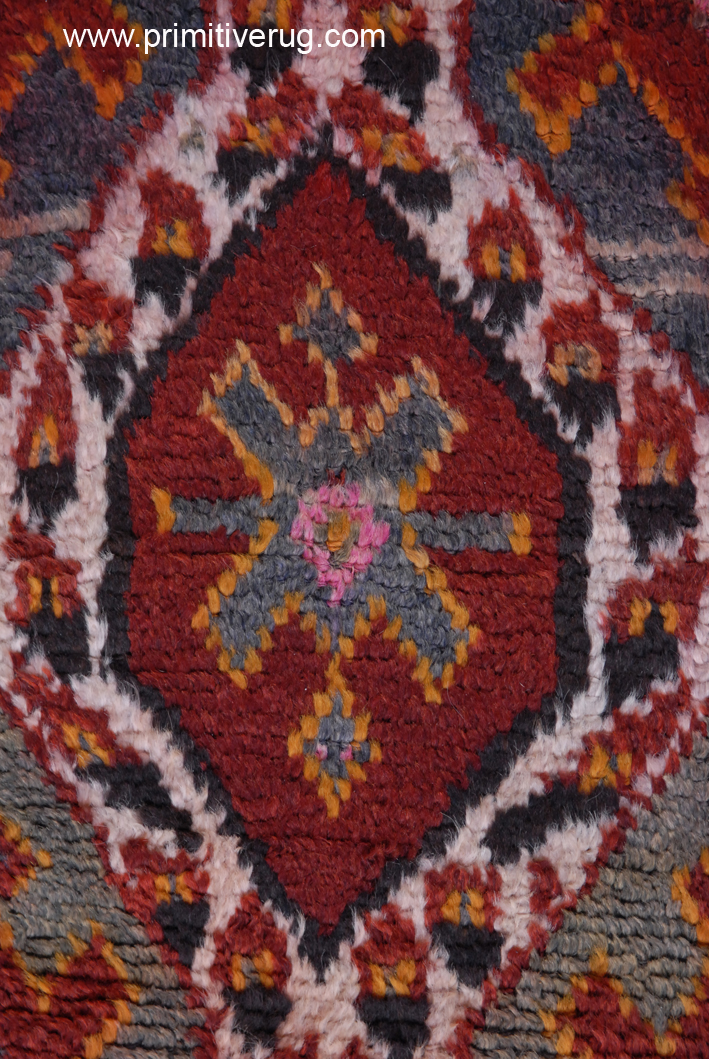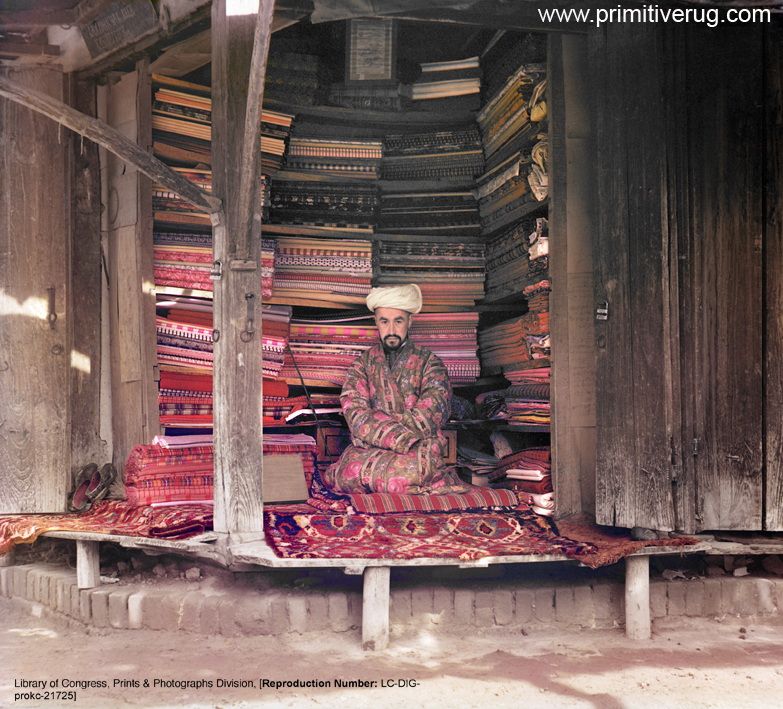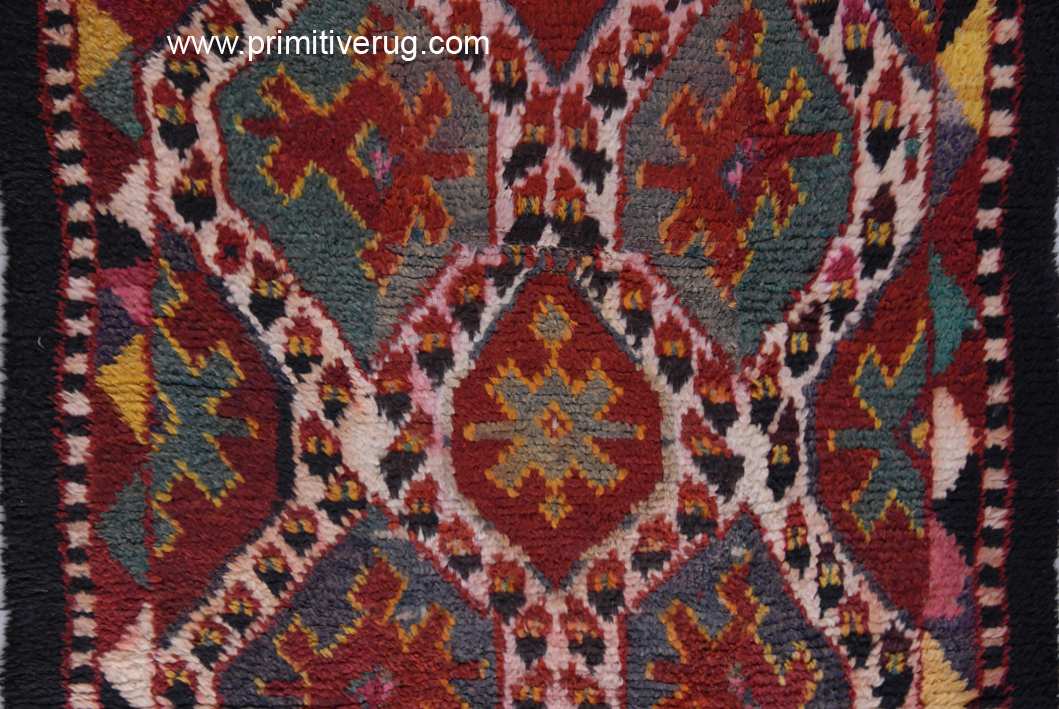Uzbek Julkhirs
Robert Cobcroft
Uzbek Julkhirs probably from Northern Afghanistan or Southern Uzbekistan, woven in the first quarter of the twentieth Century. There is some tip fading, the original dye colours are more vivid at the base of the knots. The probable use of synthetic dyes and subsequent fading has resulted in a muted colour range. The lightest wool colour is natural undyed camel hair. Use of the rhombus as a design element was common in Julkhirs in this rug delineated by the dark brown sheep wool, diagonal lattice design. This example shows particularly poor rendering of the rhomboid shapes creating a primitive rug with naive qualities.
The warp faced back is typical of julkhirs rugs, this one woven using a common method, wool warps and wefts are paired singles.

